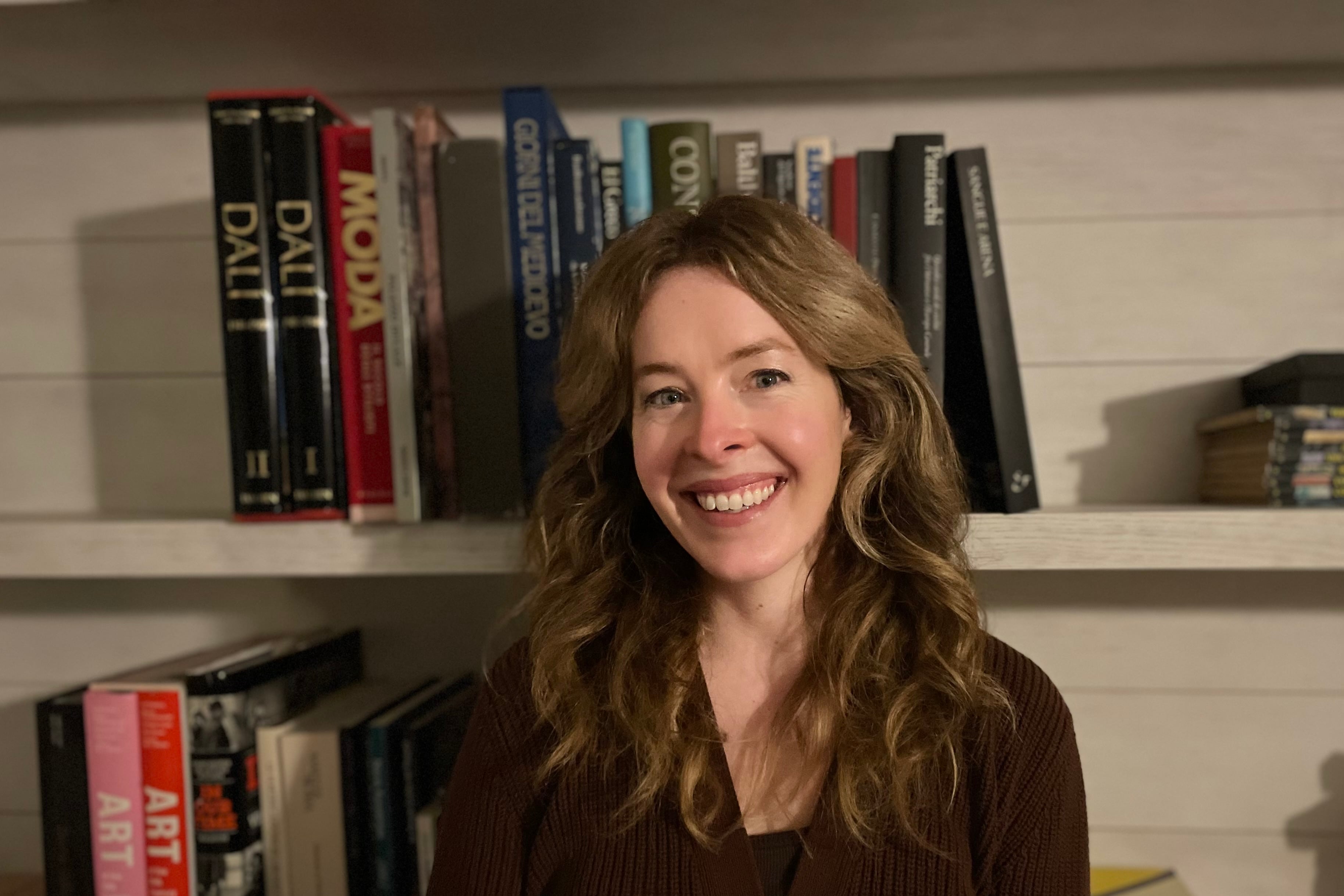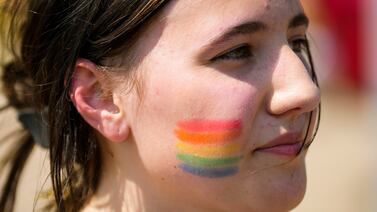On Jan. 6 two years ago, students in social studies teacher Anne-Michele Boyle’s virtual class urged her to turn on the news.
Boyle had been teaching at Whitney Young Magnet High School for 15 years. She’d created the school’s Global Citizenship class. But after watching the live footage of the U.S. Capitol insurrection in disbelief, Boyle found herself rethinking her approach to the class.
She scrapped her lesson plans for February and spent the entire month focused on media literacy. Among her goals: to help her juniors and seniors discern fact from fiction, identify credible sources of news, and spot misleading information. Before Jan. 6, 2021, she had devoted two days or less of her course to media literacy. Since then, she has dedicated a full five weeks to critically examining this era’s barrage of misinformation, comparing it to quality journalism and news posted on TikTok. Using Boyle’s lessons, her students have been able to talk family members and friends out of spreading conspiracy theories on- and offline.
This past fall, a first-of-its-kind Illinois law requiring all high schools to teach students about media literacy went into effect. Groups such as the Illinois Media Literacy Coalition — a collective of educators, librarians, academics, and others — rallied to help schools with the rollout of the law, which gives educators a lot of flexibility about what and how much to teach and includes no resources for professional development.
Chalkbeat spoke with Boyle about finding resources for teaching the topic and making it relevant to students.
This interview has been lightly edited for length and clarity.
How long have you taught your Global Citizenship course, and how much of it did you devote to media literacy before Jan. 6, 2021?
I developed the course Global Citizenship/Local Citizenship in 2017 because nothing like it existed at my school or other Chicago Public Schools. Now any school in my district can choose to offer it. Global Citizenship is a current events-focused course that challenges students to embrace their roles as global citizens and local citizens by exploring topics such as poverty, hunger, climate change, global health, fair labor, ethical consumption, media literacy, equity, sustainability, and responsibility. Throughout the year, students research, study, analyze, and assess how well we as a global community and local community are doing to reach the United Nations’ Sustainable Development Goals. Every unit features an expert speaker and a service-learning or justice-oriented activity. Prior to Jan. 6, 2021, I devoted one-and-a-half to two days teaching media literacy. Today, my students and I spend five weeks learning media literacy skills and exploring the role media plays in a strong democracy.
You got to watch the Jan. 6 insurrection at the U.S. Capitol unfold with your students. What do you remember most vividly from that experience?
Yes, I was teaching remotely from my house. My three kids were learning a wall away from me in the kitchen and living room while I was virtually with my Global Citizenship students. It was toward the end of the class period, and I was in the midst of speaking to my students about something when students started dropping in the chat box that we all needed to open up some news sites. Then one of my students turned on her mic and said that “something big” was happening at the Capitol. Class ended briefly after that. I spent the rest of the day on my couch watching various news broadcasts and reading everything posted by The New York Times, NPR, The Washington Post, and The Wall Street Journal.
How did your approach to teaching media literacy change in response to the insurrection and its aftermath?
During the afternoon of January 6, 2021, as I watched with horror the live news coverage of the insurrection at the Capitol, I realized that the two measly days I used to spend teaching media literacy skills needed to be overhauled and greatly expanded. I scraped my lesson plans for February, cobbled together resources, and spent the whole month of February 2021 teaching media literacy skills.
The fact that 2,000 people stormed the Capitol to prevent a peaceful transfer of power from Trump to Biden because they believed in their heart of hearts that the election was stolen illustrated to me how fragile our democracy is, how dangerous misinformation can be, and the absolute need to make Americans more educated about consuming media.
How did your students engage with the more extensive media literacy unit you taught last year? What feedback did you get?
They were grateful to learn specific skills such as lateral reading and reverse image look-ups, but they also really enjoyed the fruitful dialogues that developed after exploring resources such as Reporters Without Borders. These conversations led to further discussions on the role of a free press, a media-literate public, free and fair elections, and, overall, what it means to have a strong democracy. These discussions were heartfelt and passionate, and they made me grateful for my career as a teacher.
What was a highlight of exploring media literacy more in-depth with your students last year?
We wrapped up our unit with a “Civically Engaged Media Literacy Service Learning Project.” Students reviewed everything that we had learned and created their own project to teach others. Some students created public art installations to inspire change in how people consume their news or educate on a media literacy issue. A number of students taught family members media literacy skills in fun, family party settings that resulted in real change. Students documented their work from the planning process, through the execution stage, to results and final assessments. Students presented it to our class to wrap up the unit. Many of the students that taught family members remarked on how the fun atmosphere and game-like nature of their teaching resulted in a number of older family members realizing that some of their reposts on Facebook perhaps weren’t actually true. The non-confrontational approach resulted in real change, including less misinformation spreading in the future.
Starting this year, a new law in Illinois requires schools to teach media literacy. Did that law influence how you and your school approach the subject? What’s your best advice for educators who are tackling a media literacy unit for the first time?
I love that this new law went into effect and am proud of the state of Illinois for passing this law. I was already teaching media literacy, so it has not impacted how I approach teaching it.
My advice to fellow educators: Use the resources that are already available. An incredible benefit of teaching in 2023 is the vast array of free, quality resources. The News Literacy Project is a great resource. Their Checkology lessons are easy to use, engaging and succinct. As a teacher, you can pick and choose what you utilize. The Stanford History Education Group also provides a treasure trove of resources to help you teach media literacy. The Pulitzer Center is my go-to resource for all issues that I am teaching, including media literacy. Also, I am happy to share all of the lessons and activities that I have created.
You won a fellowship through the Fulbright U.S. Scholar Program to support your efforts to improve media literacy. How is that fellowship helping you reach that goal?
As part of the Fulbright Teachers for Global Classrooms Program, I was required to develop a unit from start to finish. This was an easy decision for me to make. I spent September through December of 2021 creating, developing, and editing my media literacy unit plan. My Fulbright instructor provided me with regular feedback. As part of our Fulbright coursework, my cohort members and I were required to peer grade our unit plans as well, further improving our unit plan development. The unit went swimmingly last year, and I couldn’t be more excited to teach it in 2023.
Mila Koumpilova is Chalkbeat Chicago’s senior reporter covering Chicago Public Schools. Contact Mila at mkoumpilova@chalkbeat.org.









